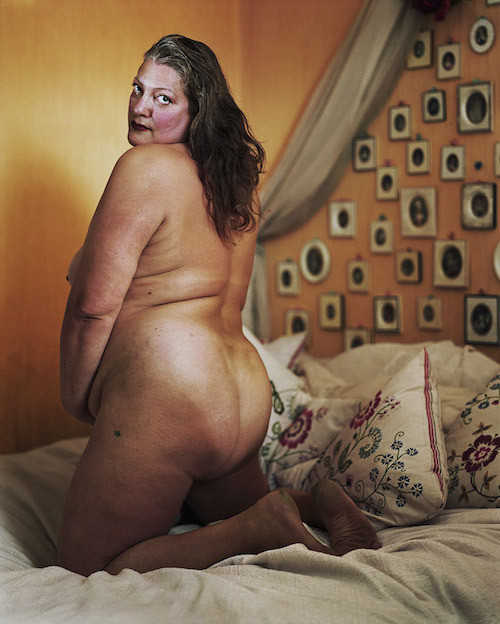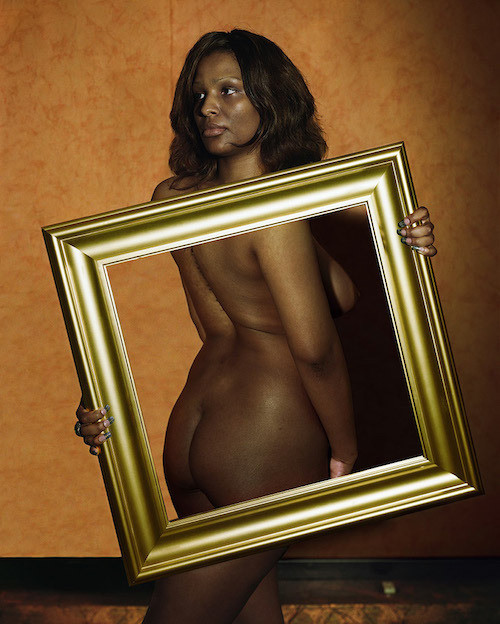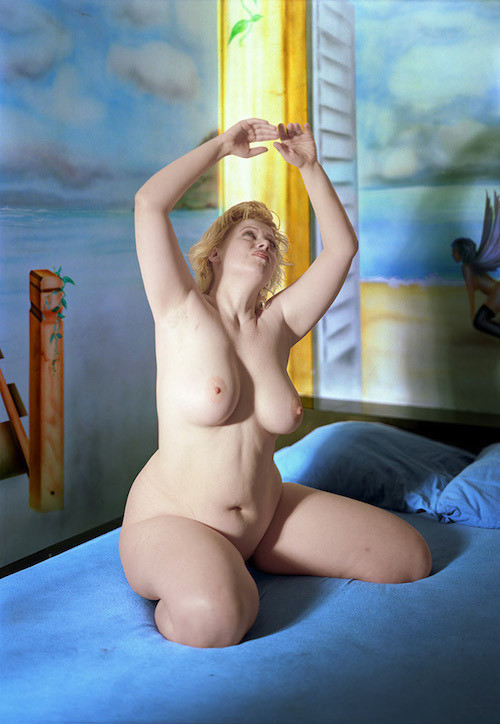When American photographer Malerie Marder was a student at Yale, Phillip Lorca diCorcia—who was one of her professors—worked with her on her first monograph, Carnal Knowledge. Her projects have dealt with the relationship between voyeurism and intimacy ever since.For her new series, Anatomy, Marder spent six years working with prostitutes in Amsterdam and Rotterdam, coming up with compositions that bring to mind the works of painters like Magritte, Toulouse-Lautrec, or Courbet. I called her up for a chat.
Advertisement
VICE: Is it true you had to pay the women for their time?
Malerie Marder: Yes, I paid each woman 350 euros [$480]. A friend of mine, who is a collector, helped me financially but also worked as my assistant. He was my angel, my patron saint; without him none of this would have been possible.Did you face any problems with convincing people to pose for you?
The real problem was not being able to photograph everyone who wanted me to. I'm a small presence in the studio—I shoot with a view camera that is slow and use an HMI light, which is like a warm sun. It's a very small set up. I incorporated flash at the end but even that was just an additional light. I didn't overtake the space so I think the women often forgot about me.
Malerie Marder: Yes, I paid each woman 350 euros [$480]. A friend of mine, who is a collector, helped me financially but also worked as my assistant. He was my angel, my patron saint; without him none of this would have been possible.Did you face any problems with convincing people to pose for you?
The real problem was not being able to photograph everyone who wanted me to. I'm a small presence in the studio—I shoot with a view camera that is slow and use an HMI light, which is like a warm sun. It's a very small set up. I incorporated flash at the end but even that was just an additional light. I didn't overtake the space so I think the women often forgot about me.

How come you decided to reproduce those famous works of art?
I used to look for rational reasons why I was making a certain kind of work, but I often end up in places out of instinct and wonder. On museum place cards you can read about Toulouse-Lautrec's paintings of prostitutes and how their bodies were depicted in a manner that seemed comfortable. I found myself similarly mesmerized by the idea of how one person's survival could also be their art. There's a long history of courtesans being the muses of male painters, so it seemed natural that my pictures should reference painting.Is there a particular reason why these women had to be prostitutes?
I wanted to make a group of pictures solely of women, which would be part hallucinatory, part real. I wanted to look at women who intrinsically have a different relationship to their bodies. It was a meditation on that thin separation between the two sides of my camera, that sliver of luck that separated me from the world of these women.
I used to look for rational reasons why I was making a certain kind of work, but I often end up in places out of instinct and wonder. On museum place cards you can read about Toulouse-Lautrec's paintings of prostitutes and how their bodies were depicted in a manner that seemed comfortable. I found myself similarly mesmerized by the idea of how one person's survival could also be their art. There's a long history of courtesans being the muses of male painters, so it seemed natural that my pictures should reference painting.Is there a particular reason why these women had to be prostitutes?
I wanted to make a group of pictures solely of women, which would be part hallucinatory, part real. I wanted to look at women who intrinsically have a different relationship to their bodies. It was a meditation on that thin separation between the two sides of my camera, that sliver of luck that separated me from the world of these women.
Advertisement
Does that mean you support legal prostitution?
I don't think of it that way. If I stop to give money to someone on the street who is homeless, that's not my way of supporting homelessness. I paid the women for their work as muses. It was a collaborative project that resulted in a group of pictures, but I could have had the intent of making a play and casting the women in all the parts. I wanted to combine artifice and reality to create pictures that were both unapologetic and beautiful.Do you have any stories to share about these women?
They all had different stories. Many were mothers. None were underage.Could you possibly tell me more about other projects you are currently working on or planning on doing?
I'm currently working on a series of photographs in my psychiatrist's house.
I don't think of it that way. If I stop to give money to someone on the street who is homeless, that's not my way of supporting homelessness. I paid the women for their work as muses. It was a collaborative project that resulted in a group of pictures, but I could have had the intent of making a play and casting the women in all the parts. I wanted to combine artifice and reality to create pictures that were both unapologetic and beautiful.Do you have any stories to share about these women?
They all had different stories. Many were mothers. None were underage.Could you possibly tell me more about other projects you are currently working on or planning on doing?
I'm currently working on a series of photographs in my psychiatrist's house.



